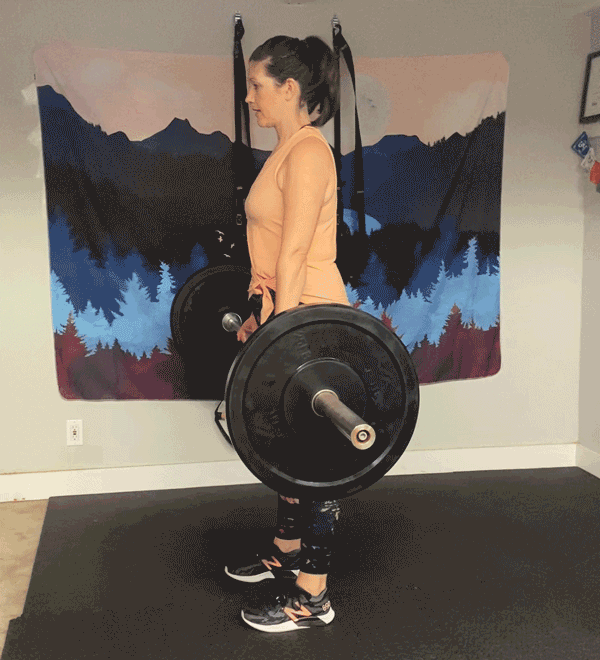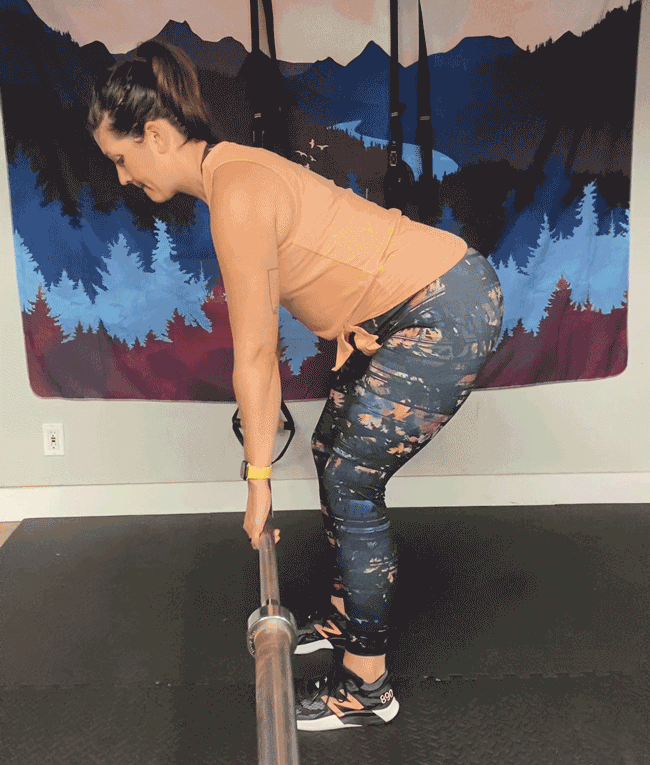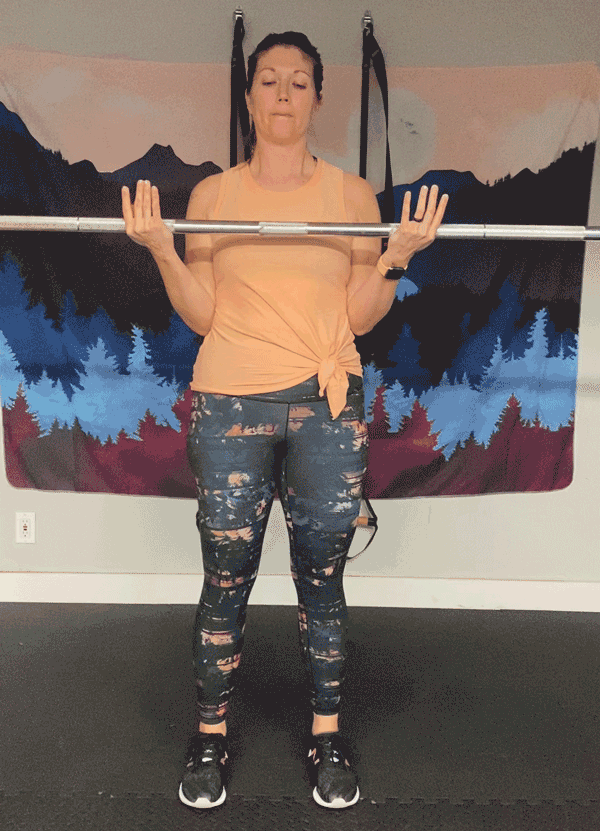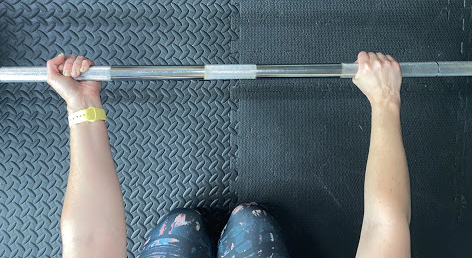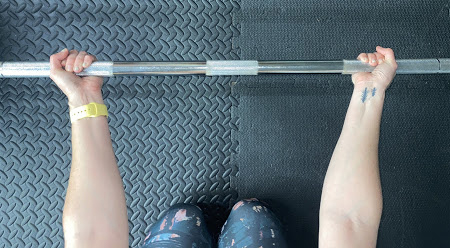Written by Trainer Jaimie Konsitzke
|
|
Happy New Year, fellow fitness enthusiasts! ‘Tis the season for resolutions and trying new things. Some of you may have received a barbell as a gift during the holidays; Others of you may have noticed that Sports Basement now carries Olympic barbells (yay!) along with bumper plates (double yay!), but aren’t really sure where to begin. Whether you’re an experienced strongman, or a novice lifter, this “pull” day barbell workout is sure to offer a little something for everyone.
A traditional 5-day weightlifting split typically includes; 1) chest & triceps (push), 2) legs, 3) back & biceps (pull), 4) arms, and finally, 5) shoulders & core. Many folx perform their deadlifts on leg day; However, in this workout we will be including deadlifts, as the hamstrings will help to pull the weight back up from the bottom of the movement. Including a demanding lift such as the deadlift on pull day is a great way to cover a lot of ground in one exercise, while also allowing lifters to focus more of their energy on leg day towards things like barbell back squats. Win-win!
|
|
|
|
|
WARM-UP
|
Foam roll: 5-10 minutes
IT band, quadriceps, inner thigh, calves, lats
|
|
|
|
3 sets of 8-10 reps
(If you’re adding plates, start off first with a few reps using just the barbell itself) Feet and hands should be shoulder-width apart as you approach the bar. Grasp the bar firmly using either an overhand grip or a staggered grip (one hand facing up, one hand facing down). Brace your core. Be sure to keep your shoulders pinned back with both feet planted firmly on the floor, and exhale deeply through your mouth as you stand up. Keep your core braced and inhale through your nose as you begin your descent. Aim to keep the barbell as close as you can to the front of your legs to control your center of gravity; slight bend in the knee to avoid locking. As you reach the bottom of the movement, your back should be flat, spine should be neutral, and heels should remain on the ground. Lift with your legs, not your back, as you exhale through the mouth and return to an upright position.
|
|
Don’t be afraid to go a little heavy with your deadlifts! After all, heavy weight leads to fewer reps (pro tip). If you’re unsure where to start in terms of how much weight to use for your lifts, consult a deadlift standards chart and enter your weight and gender. Master the recommended beginner weight before leveling up.
|
|
|
|
|
BENT OVER BARBELL ROW
|
3 sets of 8-10 reps
(Start off with a couple warm-up reps using only the bar) Feet and hands should be shoulder-width apart. Approach the bar and lift it as you would in a deadlift. When executing a row, many folx like to experiment with different grips. For example, you could use a traditional grip on the bar in which your four fingers wrap around the top of the bar while your thumb hooks under the bottom. Others prefer to curl their thumb over the top of the bar, placing a greater demand on one’s grip strength and recruiting less assistance from the biceps. A third option is to use an underhand grip in which both of your palms face upward. Once you’re in a standing position, hinge at the hips and lean forward slightly, maintaining a soft bend in your knee. Your back should now be flat and your arms should be hanging like vines. Brace your core and keep your elbows close to your body as you use your back to pull the barbell up towards your belly button, staying in control and avoiding any yanking movements. Pull up quickly, before descending slowly and returning to your starting position.
|
|
As with the Deadlift, don’t be afraid to go a little heavy! Your back and legs are likely stronger than you think. Consult a weightlifting standards chart for info based on your weight and gender.
|
|
|
|
|
BICEP CURL
|
3 sets of 8-10 reps
Isolation is the name of the game with bicep curls. You want to be sure that you are putting yourself in a position where you are able to work your biceps without getting all your other muscle groups involved (i.e. compensating). Doing bicep curls while seated on a weight bench or plyo box is a great way to start. Another option is to perform slow negatives. Start in a standing position, holding the barbell with your palms facing upward, at the top of the movement. Keep your elbows locked in tight against the sides of your body as you slowly descend down to the bottom of the movement (take as long as you can!). This will help to build strength in your biceps, while also fostering deep mind/muscle connection. For many folx, using just the bar itself will provide enough of a challenge without adding any plates.
|
|
Three exercises may not seem like a lot. But as the weight on the bar increases, each repetition will become significantly more difficult than the last. This is the ultimate goal in a weightlifting routine - to aim high, to ‘fail’ (failure is good in weightlifting!), and to try again next set. I like to complement these three lifts with chin-ups and a few burnout sets of curls and rows with resistance bands or dumbbells. If you are new to the world of weightlifting, welcome! And remember, never be afraid to feel a little silly trying out something new. Happy lifting!
|
|
|
HOW TO HOLD YOUR BARBELL
|
|
|
Staggered grip for deadlift.
|
|
|
Underhand grip for barbell row.
|
|
|
Overhand grip for deadlift or row.
|
|
|

